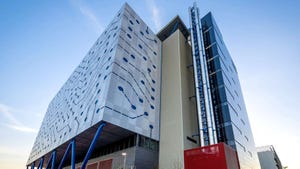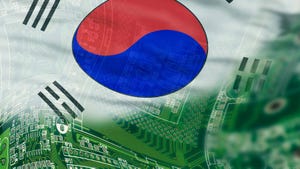DARPA Benchmarking Delivers Quantum Computing Reality CheckDARPA Benchmarking Delivers Quantum Computing Reality Check
Algorithms for finance and weather prediction models may not achieve an advantage.

This article originally appeared in IoT World Today.
The US Defense Advanced Research Projects Agency (DARPA) quantum benchmarking program has found that quantum computing is living up to its promise for some use cases but falling short in others.
Six months into the second phase of the study, DARPA published pre-print papers with its findings that show mixed results.
They found it is plausible that quantum computers will provide an advantage for economically valuable applications in certain chemistry, quantum materials and materials science applications.
However, DARPA said: “It is unclear, at this point, whether any advantage can be achieved for applications in nonlinear differential equations.”
These types of equations underlie forecasting use cases, such as predicting financial market movements and weather modeling, previously considered poster boy use cases for quantum computing.
Some results showed that positive results could potentially be achieved if more powerful, fault-tolerant hardware is developed.
For this second phase, teams from the University of Southern California, HRL Laboratories and L3Harris focused on benchmarks and applications.
Two other teams from Rigetti Computing and Zapata Computing estimated the required quantum computing resources for the applications to estimate whether using quantum computers would pay off.
MIT Lincoln Laboratory, NASA and Los Alamos National Laboratory provided subject matter expertise, software integration and test and evaluation capabilities.
One of the more positive results was achieved by Zapata AI, whose research into quantum-powered catalyst discovery found that, with continued development, it would be feasible for fault-tolerant quantum computers to accelerate the discovery of homogeneous catalysts.
The University of Southern California found that affordable quantum computing simulation could save around $2 million when used to screen potential materials before laboratory testing.
The researchers said applying the same methodology to materials with a metal-insulator transition, which have potential applications in alternative transistors, neuromorphic computing and smart windows, could save $20 million by performing the material search stage on a quantum computer.
“Quantum benchmarking set out to quantitatively measure progress towards specific, transformational computational challenges, as well as estimate the hardware-specific resources required for a given level of benchmark performance,” said Joe Altepeter, program manager in DARPA’s Microsystems Technology Office.
“The findings in these pre-prints mark an important first step toward quantifying the impact of quantum computers. We’re intentionally publishing preliminary results because we want robust feedback from the scientific and industrial communities. We want that feedback so by the end of the program we have results we – and the community – can really trust.”
Read more about:
IoT World TodayAbout the Author
You May Also Like









